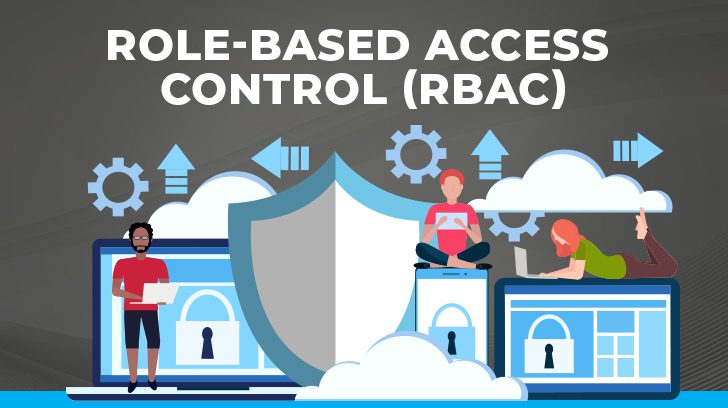I was recently working with an organization where I saw firsthand how complicated access management can become without a proper role-based access control (RBAC) method. The organization had been assigning granular permission assignments to users in a very manual way. When a new employee was onboarded, they would often clone the permissions of a similar user, thinking this would streamline the onboarding process. This seemed like an easy solution, but over time it led to a tangled web of permissions, making it difficult to track who had access to what and significantly increasing the risk of sensitive data and administrative access being exposed to more users than necessary. In this article, I will explain what RBAC is, why it’s important for keeping access secure, common pitfalls, and how it can be put into practice with real-world examples.
Understanding Role-Based Access Control (RBAC)
RBAC is an identity and access management (IAM) method of managing user permissions by assigning roles instead of individual permissions. Each role is associated with a specific set of permissions that determines what actions a user in that role can perform. This method is particularly effective in organizations with a high volume of users and varying levels of access needs. By grouping permissions into roles, RBAC simplifies administration and enhances security, minimizing the risk of unauthorized access to sensitive resources.
Key Components of RBAC
- Roles: Collections of permissions that represent job functions or responsibilities.
- Permissions: Specific rights to perform certain actions on resources (e.g., read, write, modify, etc).
- Users: Individuals assigned to one or more roles based on their job functions.
- Role-Permission Relationships: The mapping of permissions to roles, simplifying the management of user privileges.
- User-Role Assignment: The process of associating users with appropriate roles according to their responsibilities.

Why RBAC Helps with Compliance
Various IT compliance frameworks require organizations to implement stringent access control management mechanisms. RBAC helps enforce the “least privilege” principle, meaning users only get the access they need to perform their job functions. It also makes it easier to track who has access to what, helping organizations meet audit and compliance requirements, while strengthening internal control processes.
Best Practices for Implementing RBAC
- Define Roles Clearly: Start by mapping out what each job role needs in terms of access.
- Follow the Principle of Least Privilege: Grant users the minimum permissions necessary for their job functions.
- Review Regularly: Conduct periodic audits to make sure that roles remain relevant and permissions are up-to-date.
- Utilize Strong Authentication: Complement RBAC by incorporating strong authentication methods like multi-factor authentication to secure access further.
- Maintain Detailed Audit Logs: Keep comprehensive logs of changes to roles and permissions for transparency and audit readiness.
Examples of RBAC in Different Industries
- Healthcare Industry
-
- Doctors: Access to medical records, prescriptions, and diagnostic tools for their patients.
- Nurses: View patient records but have limited access to editing functions, mainly for recording observations and administering medication.
- Administrative Staff: Access to patient appointment schedules but do not have access to medical histories or protected health information (PHI).
- Pharmacists: Access to prescription details but do not have access to broader patient medical records.
- Financial Services
-
- Tellers: Access to account details and can perform transactions but cannot modify customer data.
- Loan Officers: Access to credit histories and loan applications but cannot perform basic banking tasks.
- Managers: Access to override certain restrictions for tellers and loan officers.
- IT Personnel: Access to system configurations but do not have access to customer financial data.
- Government Agencies
-
- Public Employees: Access to general information and non-sensitive documents.
- Classified Staff: Access to sensitive data relevant to their project or department.
- Top-Level Executives: Access to highly classified information and decision-making tools.
- External Contractors: Limited access only to the data necessary for the specific project they are working on.
-
- Cloud Architect: Full access to design, deploy, and manage cloud infrastructure.
- DevOps Engineer: Manage deployments and monitor performance.
- Cloud Security Engineer: Manage IAM policies, configure and monitor cloud security tools, and access to security audit logs and configuration baselines.
- Cloud Support Engineer: Access to cloud management dashboards for monitoring and troubleshooting, limited ability to restart services or scale up/down resources, access to support ticket systems, and client communication tools.

Common Pitfalls in RBAC Implementation
- Role Explosion: Over time, organizations may create too many roles, often due to overly granular role definitions. This can make managing roles complex and lead to confusion. To avoid this, use role hierarchies and group similar permissions together.
- Poor Role Design: Roles should be based on a thorough analysis of business needs and user activities. Poorly designed roles can lead to excessive permissions or gaps in access, both of which can be security risks.
- Lack of Role Hierarchy: Without a clear role hierarchy, permissions can become duplicated across multiple roles, complicating management and auditing. Implementing a role hierarchy where lower-level roles inherit permissions from higher-level roles can simplify this process.
- Over-Permissioned Roles: Granting too many permissions within a single role can lead to users having more access than necessary. This risk can be mitigated by regularly reviewing roles and adhering to the principle of least privilege.
Avoiding these pitfalls and other access control issues requires careful planning, ongoing monitoring, and regular adjustments to make sure that your RBAC implementation remains effective and aligned with your organization’s needs and security requirements.
The Impact of Role-Based Access Control: Benefits & Future Considerations
Role-Based Access Control (RBAC) is an effective approach for managing access to resources and data within an organization while maintaining compliance requirements when properly implemented. Key benefits of RBAC implementation are enhanced security, operational efficiency, scalability, risk management, and improved compliance.
Linford and Company has extensive experience evaluating and providing insights on organizations’ access management processes, including RBAC. Please contact us if you would like to learn more about our audit services audits and how we can assist.

Danielle started her information systems compliance career in 2003 at PricewaterhouseCoopers in their Systems and Process Assurance group, followed by the Internal Audit Department of a financial services company and the IT compliance group for a large healthcare organization. She has experience in IT general control reviews, SOC audits, HIPAA compliance, Sarbanes-Oxley section 404 attestation engagements, and Payment Card Industry Data Security Standards (PCI DSS) compliance. Danielle is a Certified Information Systems Auditor (CISA) and received her Bachelor of Science degree in Management Science & Information Systems from Penn State University.




